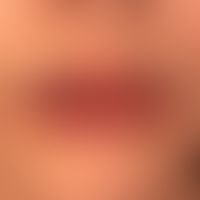Image diagnoses for "Bubble/Blister"
95 results with 373 images
Results forBubble/Blister

Solar dermatitis L55.-
Dermatitis solaris. 1st degree burn in the area of the trunk with recess of the areas covered by the arm.
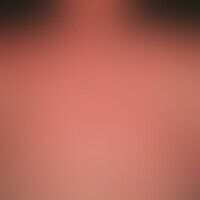
Solar dermatitis L55.-
Dermatitis solaris. almost universal, succulent erythema in a 30-year-old patient (skin type II) after intensive, several hours of sunbathing in the midday sun. accompanying strong sensation of heat, chills and circulatory weakness about 7 hours after exposure to the sun.

Solar dermatitis L55.-
Dermatitis solaris: extensive, succulent, painful erythema in a 25-year-old man with skin type II, clearly marked on sunlight-exposed areas, preceded by several hours of sun exposure.
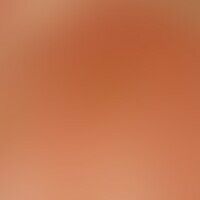
Solar dermatitis L55.-
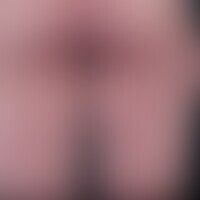
Linear IgA dermatosis L13.8
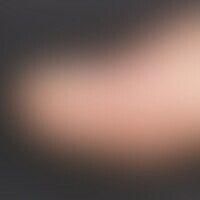
Dyshidrosis L30.1
Dyshidrosis: Multiple, acutely occurring, skin-coloured, isolated but also aggregated, smooth, itchy vesicles in the groin skin, existing for 4 days, 0.1-0.3 cm in size; progression in stages; increased in the warm seasons.
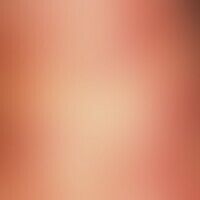
Eczema herpeticum B00.0

Dyshidrotic dermatitis L30.8
Dermatitis, dyshidrotic: dense, partly solitary, partly confluent vesicles and pustules (edge of the hand); 0.1-0.2 cm large disseminated brown, hardly raised papules and plaques with and without adherent scaling in the middle of the hand; itching and slight pain.
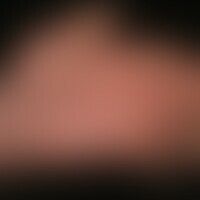
Dyshidrotic dermatitis L30.8
Eczema, dyshidrotic skin changes affecting both palms, chronically recurrent, partly vesicular, partly flat erosive, partly hyperkeratotic skin changes with formation of rhagades, which are particularly pronounced at the finger ends.
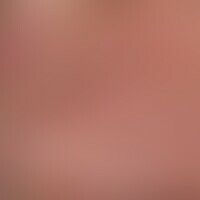
Dyshidrotic dermatitis L30.8
Eczema, dyshidrotic. detail: Strongly pronounced, hyperkeratotic skin changes on the palm of the hand with massive formation of erosions, rhagades and vesicles.
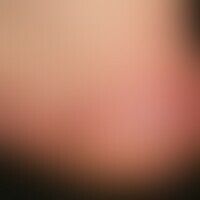
Dyshidrotic dermatitis L30.8
Eczema, dyshidrotic: chronically recurrent, slightly infiltrated plaques on the right foot of a 43-year-old man. Furthermore, reddish-brown, partly encrusted, punctiform, older erosions appear in places where water clear vesicles were previously present. Occasionally pinhead-sized, bulging water clear vesicles as well as fine-lamellar scaly deposits. Similar skin lesions are also present on both plantae and the edges of the toes.
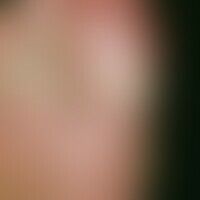
Dyshidrotic dermatitis L30.8
Eczema, dyshidrotic. multiple, acutely occurring clear blisters and blisters on the big toe with beginning scaling. severe itching.
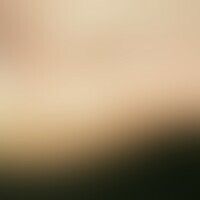
Epidermolysis bullosa simplex localized (Weber-Cockayne) Q81.0
Epidermolysis bullosa simplex, Weber-Cockayne. acute, large blister occurring in the area of the heel after light walking. frequent occurrence of blistering after minor trauma within the family. mild form of epidermolysis simplex with blistering as a consequence of relatively minor traumatic stress on hands and feet.

Epidermolysis bullosa simplex localized (Weber-Cockayne) Q81.0
Epidermolysis bullosa simpex, Weber-Cockayne: Epidermolysis bullosa simpex, Weber-Cockayne: visible blistering or only simple detachment of the epidermis after trivial traumas. Scarless healing.

Erysipelas A46
Erysipelas. hemorrhagic blistering and erosions on sharply defined erythema in the area of the foot.
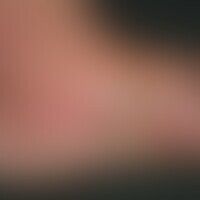
Erysipelas A46
Sharply limited redness on the left inner side of the foot with hemorrhagic blistering and honey-yellow incrustations in a 74-year-old female patient.
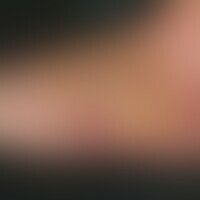
Erysipelas A46
Erysipelas: Sharply limited redness along the left back of the foot and the outer side of the foot with hemorrhagic, partly putrid blistering in a 74-year-old female patient.

Erysipelas A46
erysipelas. solitary, acutely occurring, extensive, sharply defined, red plaque and bulging blisters with serous content in the area of the lower leg. in this case, the entry portal was a macerated tinea pedum. fever and chills, lymphangitis and lymphadenitis also exist.
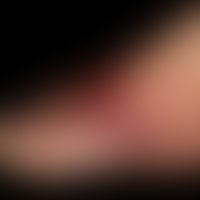
Erysipelas A46
Erysipelas, acute acute reddening of the back of the foot under high fever, sharply limited and extensive hemorrhagic blistering.
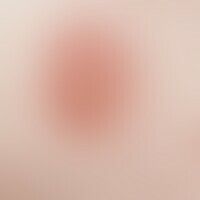
Erythema multiforme, minus-type L51.0
Erythema multiforme: sharply defined, reddish plaque with central blister formation.

Erythema multiforme, minus-type L51.0
Erythema multiforme. 10-year-old female patient with Z.n. herpes simplex virus infection 4 weeks ago. multiple, acutely occurring, itching, clearly infiltrated, 0.2-0.7 cm large, sharply defined, firm, red, smooth papules and partly confluent plaques with partly cocardial aspect and central blistering.
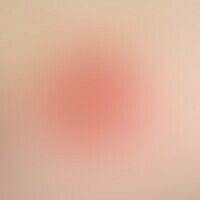
Erythema multiforme, minus-type L51.0
erythema multiforme: suddenly appeared, for 2 days existing, itchy, flat, cocard-like plaque on the back of a 17-year-old woman. the skin change appeared shortly after the beginning of antibiotic therapy for urinary tract infection. further, similar skin changes appeared on other parts of the body.

Erythema multiforme, minus-type L51.0
Erythema multiforme: typical picture with different stages of development of the efflorescences: besides fresh 0.2-0.3 cm large flat papules, further developed large plaques with discrete cockade structure.
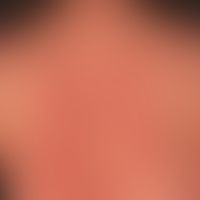
Erythema multiforme, minus-type L51.0
Erythema multiforme: 35-year-old female patient with Z.n. herpes simplex virus infection 4 weeks ago. multiple, acutely occurring, itchy, exanthema, existing for a few days. 0.2-0.7 cm large, sharply defined, firm, red, smooth papules and partly confluent plaques with partly cocardium-shaped aspect and central blister formation.
